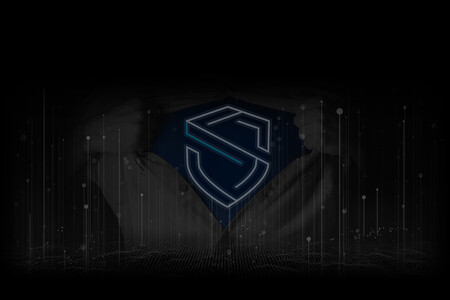
The Security Operations Center (SOC) plays a critical role in reducing cyber risk. Successful management of a SOC, however, is a team effort that requires the combined expertise of entry-level (tier 1), mid-level (tier 2), and senior-level (tier 3) analysts.
In this piece, we break down the key differences of the three analyst tiers, offer tips for each tier, and provide universal advice to help you succeed in your SOC career.
The Entry-Level SOC Analyst: Learning and Time Management
For tier 1 analysts breaking into the SOC, the problem-solving demands of the position, coupled with the ever-evolving security threats and 24/7 operations, call for more than just a routine commitment. At this initial level, your focus should be on learning the ropes and improving your time management skills.
Why? Because it’s easy for new SOC analysts to take on too much, too fast. Let’s say you discover a new threat vector using a previously unknown vulnerability. The natural tendency is to dive headfirst into the investigation to discover exactly what’s going on—but this means neglecting other duties to accomplish the goal. Instead, entry-level analysts need to focus on the details, document everything with artifacts, and escalate investigations to Tier 2 and 3 staff where appropriate.
The Mid-Level Analyst: New Tools and Mentorship
Tier 2 analysts delve deeper into exploring potential threat alerts. With a focus on continuous learning, tier 2 analysts leverage tools like the MITRE ATT&CK® and D3FEND™ frameworks along with the Lockheed Martin Cyber Kill Chain. Their goal is to uncover not only the event that generated the alert, but other linked activities possibly indicating wider exploitation. Mid-level analysts are also tasked with helping tier 1 staff increase their skills and improve their threat hunting.
As a result, this tier is a test of both managerial skills and technical acuity as mentoring entry-level analysts and conducting in-depth investigations become parallel tasks.
The Senior-Level Analyst: Leadership and Managerial Skills
As a tier 3 analyst or SOC manager, your responsibility shifts from mere technical work to incorporating leadership and management skills.
At this point, interaction with external stakeholders increases, and creating useful documentation, playbooks, and reports becomes critical. Key tasks include mentoring your team, identifying new talent, proactive threat hunting, and tuning alerts—your role is centered around empowering the SOC to be better, faster, and more robust.
3 Tips to Succeed at Any Level
SOC careers are about more than skills training and industry experience. These three other universal tips will help you flourish.
1. Stay Curious
Curiosity kills the threat. It’s a critical characteristic for any senior, mid, or entry-level SOC analyst—you can’t simply react to what’s happening, you need to be curious about what comes next. This could mean going beyond the direct impact of a threat to explore other potential failure points in company networks. Or it could mean staying up-to-date on security news and insights to better understand how new threats may impact both legacy and cloud-based systems.
2. Get Creative
The best SOC analysts are creative. Why? Because so are attackers.
Cybercriminals are constantly exploring new ways to compromise business networks, trick staff into giving up passwords, or deliver malware unseen and unheard. As a result, SOC analysts need to think outside the box. Sure, maybe a legacy tool looks secure, but what about its connections? What about its network topography and the type of data it exchanges? Given its age, is it possible that attackers might use the tool as a starting point for compromise because no one’s paying attention?
Put simply, a successful SOC analyst thinks like a hacker, but acts like a hero.
3. Connect with the C-Suite
The business value the SOC provides can unfortunately be overlooked. This is because it’s often easier to measure security in relation to what it doesn’t do than what it does.
Consider an attack stopped by SOC analysts. Because they did their jobs, the attack didn’t happen, which means business continues as usual. As a result, C-suite staff sometimes see SOCs as costly line items that don’t deliver value. As a result, SOC analysts must learn how to connect and communicate with executives to showcase the value of proactive security. This might include demonstrating dollars saved by ongoing uptime or the active avoidance of threats, which in turn drives business value. SOC teams can also highlight their role in IT compliance—as security due diligence rules evolve, SOCs can save companies significant sums of money by avoiding regulatory fines.
Mind Over Matter
SOC roles aren’t for the faint of heart. They require a mindset of continual growth and ongoing exploration to help businesses better protect their assets and improve their security response. And the going often gets tough. When SOCs find themselves under attack from multiple threats simultaneously or discover that previously-safe solutions are suddenly vulnerable, there’s a need for analysts to roll up their sleeves, dig in, and find the best solution.
Sound like the job for you? Our SOC career guide is jam-packed with expert insight to help you find your best fit.
Frequently Asked Questions
Incident Response Fundamentals: Entry-level analysts should understand basic incident response procedures, such as identifying, documenting, and escalating alerts. This includes learning to use SIEM (Security Information and Event Management) tools.
Network and System Basics: Knowledge of networking fundamentals (IP addresses, DNS, TCP/IP) and system architecture (Windows, Linux) is essential for understanding alerts and identifying potential threats.
Documentation Skills: SOC analysts need to document findings accurately, so entry-level analysts should develop skills in report writing and logging incidents in a clear, concise way.
Time Management: Entry-level roles involve monitoring many alerts, so managing time efficiently and prioritizing effectively are crucial skills to keep up with demands and avoid burnout.
Source: https://www.coursera.org/articles/cybersecurity-analyst-skills
Tier 1 (Entry-Level): Challenges include handling alert fatigue and information overload. Analysts at this level should focus on time management, effectively triaging alerts, and escalating incidents when necessary to manage workloads.
Tier 2 (Mid-Level): Mid-level analysts often juggle technical investigation with mentorship. They can overcome this by setting boundaries around their time, prioritizing high-value tasks, and gradually delegating responsibilities to junior analysts as they grow.
Tier 3 (Senior-Level): Challenges for senior analysts include maintaining team motivation, balancing technical and managerial duties, and effectively communicating with upper management. To address these, tier 3 analysts can implement structured mentorship programs, improve their own leadership skills, and use metrics to demonstrate the SOC’s impact to leadership.
Source: https://sennovate.com/common-soc-challenges-and-how-to-overcome-them
Source: https://www.wiz.io/academy/soc-team-roster-roles-responsibilities





